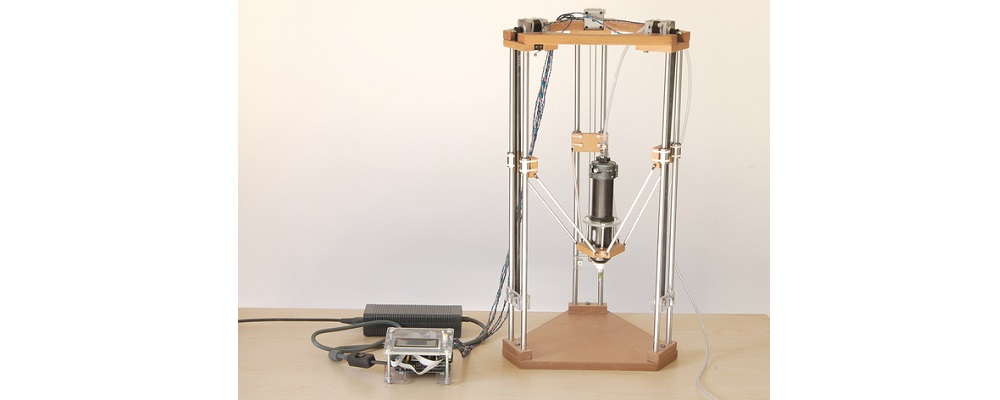Delta 3D printer for ceramics do it yourself

We talk about creating a simple 3D-printer for printing products from clay, with our own hands and from available materials.
The article from 3ders.org is translated for you by Top 3D Shop .
All photos in the article: Jonathan Keep.
The Belgian design studio Unfold modified the RapMan 3D printer and began printing porcelain in 2012. The printer could print in thin layers and made it possible to create new forms that are almost impossible to produce using traditional methods at the pottery industry.
')
Jonathan Kip inspired the work of Unfold, but by then 3D Systems bought Bits From Bytes - the manufacturer of RapMan - and stopped producing this printer. Jonathan decided to develop his own 3D printer that could replace RapMan.
Jonathan Kip, the creator of the model:
“I made this 3D printer specifically for printing clay. I wanted other people - sculptors, designers and potters to build such machines for themselves. All parts can be made independently, if at least you are able to work a little with your hands, or order via the Internet. I made parts from the simplest materials at hand; I didn’t want to rely on printed plastic parts. The working area of the printer is 20x20x20 cm, the extruder works with compressed air . "
A Jonathan-designed 3D printer is well suited for clay layering. The printer is running the Marlin Firmware firmware. To create models using the free graphic 3D-editor Blender. For cutting models - Repetier-Host preparation for printing, which can work with slicers such as Skeinforge and Slic3R.

Jonathan clay extruder made of Techcon Systems TS series metering glue gun parts. In the case went cartridges, the holder body with a lid, but without the handle. Clay is squeezed out of the cartridge with compressed air, under a pressure of 1.97 atmospheres (approximately 2 kgf / cm2). The print head holder and the cartridge (237 ml) weigh about 650 g with clay. This supply is enough for 1 hour of printing, then the next batch is loaded.




Full specifications of the materials used and assembly instructions can be found on the Jonathan website .
In the video you can see the process of assembling and connecting the printer and the beginning of printing:
“By the standards of 3D printers, this is a rather primitive tool, but it offers an accessible path to an exciting new way of working with clay ,” writes Jonathan.
What other 3D printers are easier to develop yourself or upgrade from production models? What other applications of 3D printing have major manufacturers forgotten? Share your opinion in the comments.
Source: https://habr.com/ru/post/454304/
All Articles